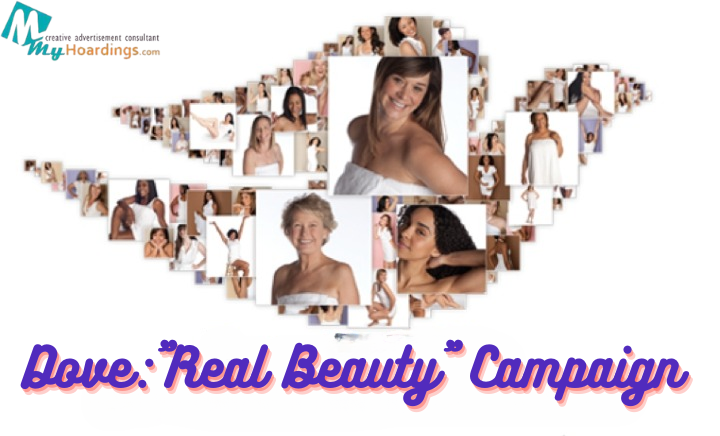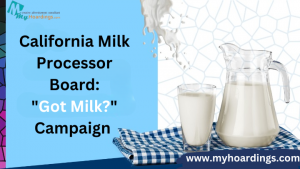Dove:”Real Beauty” Campaign
4 min read
Dove: The “Real Beauty” Campaign
The Dove:”Real Beauty” campaign is widely regarded as one of the most influential advertising efforts of the 21st century. Launched in 2004, it challenged societal norms around beauty, encouraging women to embrace their natural appearances and redefining what it means to be beautiful. Unlike traditional beauty campaigns, which focused on promoting products through unattainable ideals, Dove’s campaign highlighted real women and their diverse beauty. This groundbreaking initiative not only enhanced Dove’s brand image but also sparked a global movement, making it one of the most successful and enduring campaigns in modern advertising.

The Birth of “Real Beauty”
In the early 2000s, Dove faced a challenge common to many beauty brands: how to stand out in a market saturated with images of flawless models and unrealistic beauty standards. Research revealed that only a small percentage of women actually identified as “beautiful,” largely due to the pressure created by these standards. Dove saw an opportunity to shift the narrative and empower women by celebrating their natural beauty.
Partnering with the advertising agency Ogilvy & Mather, Dove introduced the “Real Beauty” campaign in 2004. The campaign was based on the insight that women often felt inadequate due to their appearance. Instead of focusing on conventional beauty ideals, Dove aimed to redefine beauty in a way that was more inclusive and authentic.
The Ingredients of Success
1. Breaking Beauty Stereotypes
Dove’s decision to feature real women in its ads—women of different body types, ethnicities, and ages—was revolutionary at the time. The campaign’s message was simple yet powerful: beauty comes in all shapes and sizes, and women should feel confident in their natural selves. This fresh approach set Dove apart from its competitors, who were still largely relying on airbrushed models to sell beauty products.
By moving away from the industry norm, Dove not only created a buzz but also connected with women who felt underrepresented in mainstream media. This authentic portrayal of beauty resonated deeply with consumers, making Dove a brand synonymous with empowerment.
2. Emotional Storytelling
The emotional appeal of the “Real Beauty” campaign was a key factor in its success. One of the campaign’s most memorable elements was the 2013 “Dove Real Beauty Sketches” video, which highlighted the disparity between how women perceive themselves and how others see them. In the video, women described their appearances to a forensic artist, who drew two sketches—one based on their self-description and the other based on how others viewed them. The difference between the two sketches revealed that women were often their own harshest critics.
This video struck an emotional chord with millions, as it illustrated the powerful message that women are often far more beautiful than they believe. It became one of the most shared ads of all time, solidifying Dove’s position as a brand that truly cares about its consumers’ well-being.
3. Inclusive Representation
Dove’s commitment to inclusivity was at the heart of the “Real Beauty” campaign. By featuring women from diverse backgrounds, body types, and ages, the campaign celebrated beauty in all its forms. This was a bold move at a time when beauty advertising was dominated by narrow, idealized images.
The diversity showcased in the ads allowed Dove to reach a wider audience, as women who had previously felt alienated by beauty marketing could now see themselves represented. This inclusive approach helped Dove build strong, lasting relationships with its audience, elevating the brand’s status as an advocate for body positivity.
4. Creating a Movement
The “Real Beauty” campaign wasn’t just about selling products—it was about creating a cultural shift. Dove didn’t simply launch a series of ads; it built an entire movement around the concept of self-love and body acceptance. The brand initiated global conversations on beauty standards and self-esteem, creating educational programs like the Dove Self-Esteem Project, which aimed to help young people build confidence in their appearance.
This social responsibility aspect of the campaign made Dove more than just a beauty brand—it became a brand with purpose. Consumers responded positively to Dove’s message, and the campaign’s influence extended far beyond advertising, sparking important conversations about how beauty is perceived and portrayed in society.
The Results: A Cultural and Commercial Triumph
The “Real Beauty” campaign was a major success, both in terms of its cultural impact and its commercial performance. In the years following the campaign’s launch, Dove’s sales saw a significant increase, as women resonated with the brand’s message of authenticity and inclusivity. The campaign also helped to shift the entire beauty industry’s approach to advertising, encouraging more brands to embrace diversity and realness in their marketing.
The “Real Beauty” campaign’s impact went beyond just driving sales—it fundamentally changed the conversation around beauty, body image, and self-worth. By challenging stereotypes and promoting a more inclusive definition of beauty, Dove not only gained loyal customers but also earned the respect and admiration of women around the world.

Final Thoughts
Dove’s “Real Beauty” campaign is a testament to the power of authenticity in advertising. By prioritizing real women, emotional connection, and inclusivity, Dove managed to create a campaign that not only resonated with consumers but also sparked a global movement. It remains a gold standard for how brands can successfully blend purpose-driven marketing with commercial success.
Looking to craft a meaningful and impactful campaign like “Real Beauty”? At MyHoardings, we specialize in creating strategies that resonate with audiences and drive results. Let us help you build your next breakthrough campaign!
Contact Us
- Email: business@myhoardings.com
- Phone: +91-9953847639
- Website: www.myhoardings.com
Let’s collaborate to create advertising that truly connects!






